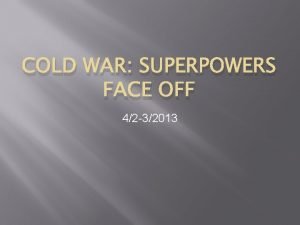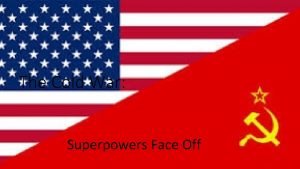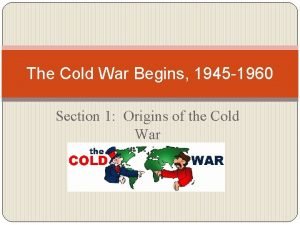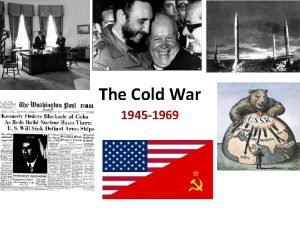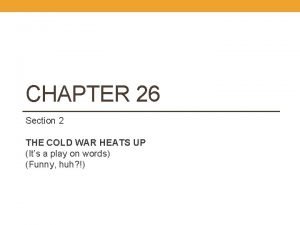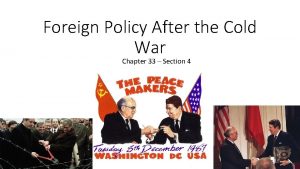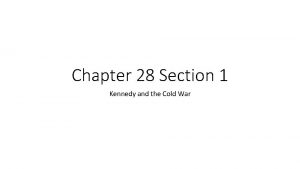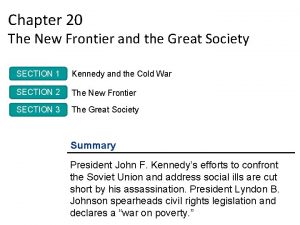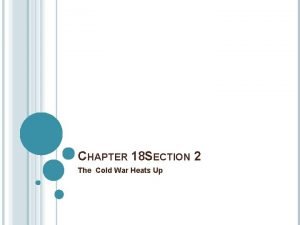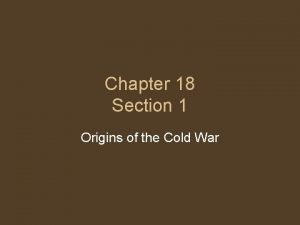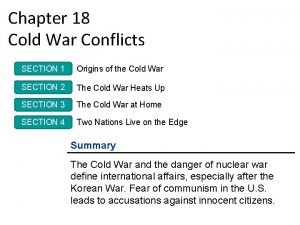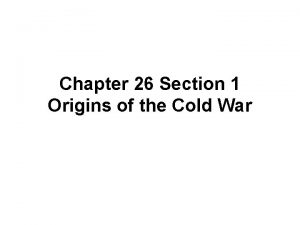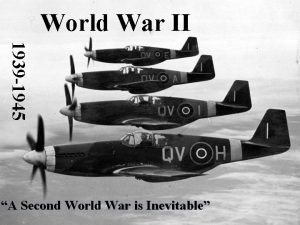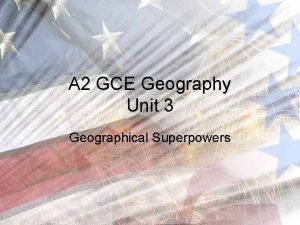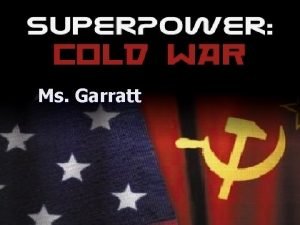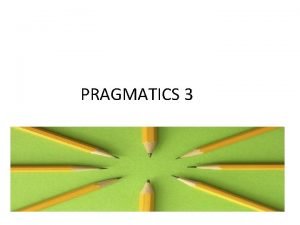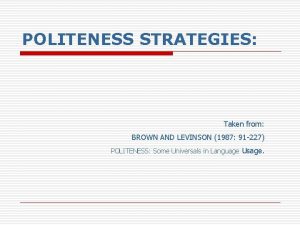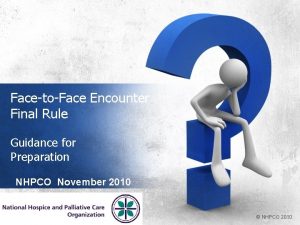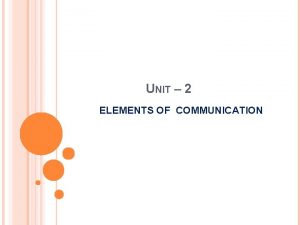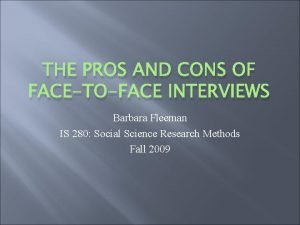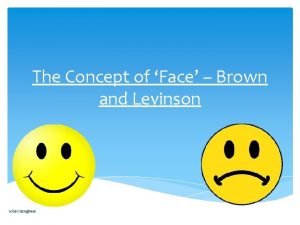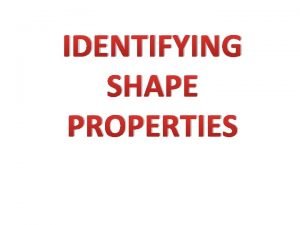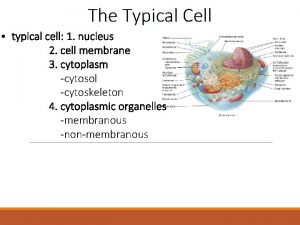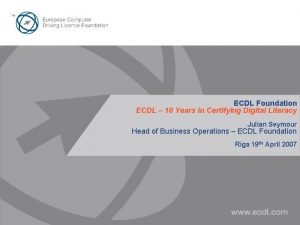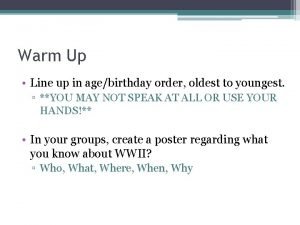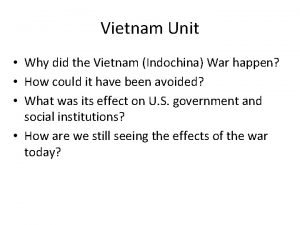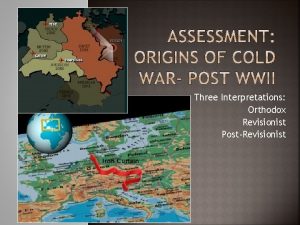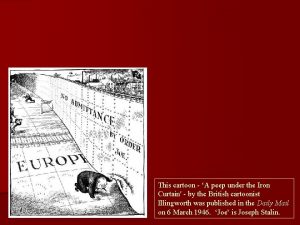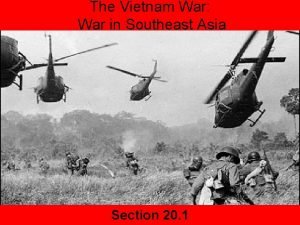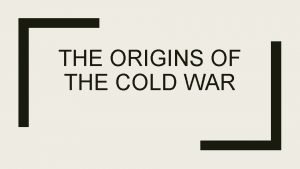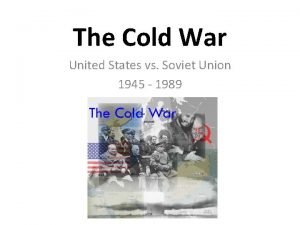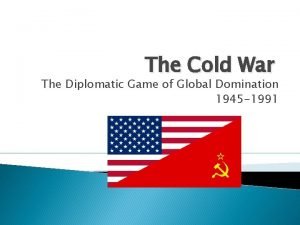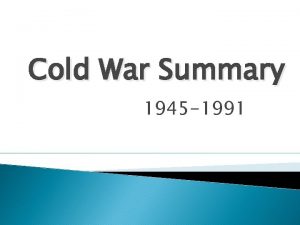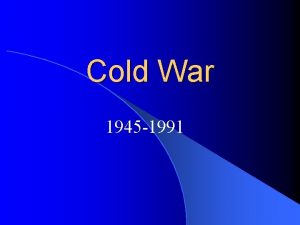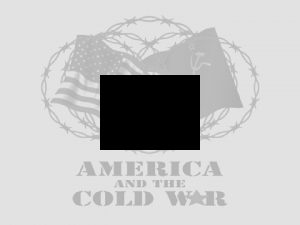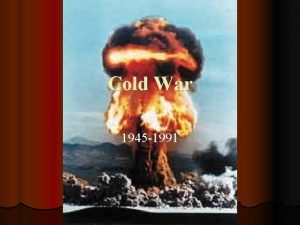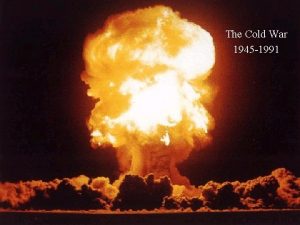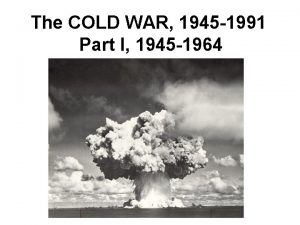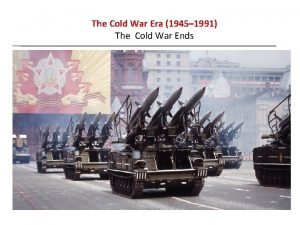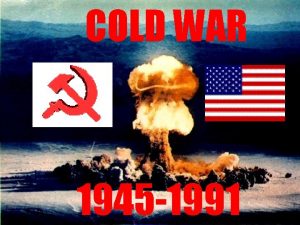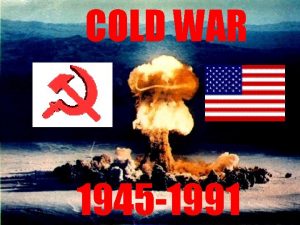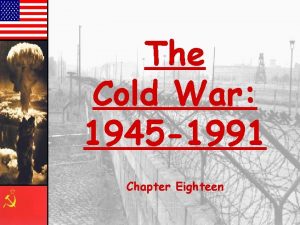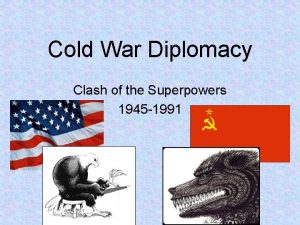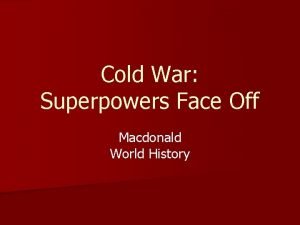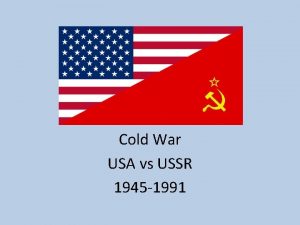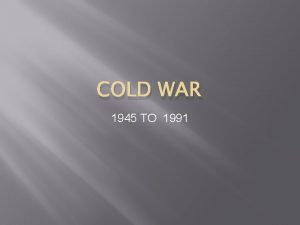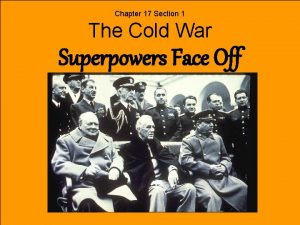Section 1 Cold War 1945 1991 Superpowers Face





































- Slides: 37

Section 1 Cold War 1945 -1991: Superpowers Face Off NEXT

SECTION 1 Cold War: Superpowers Face Off Allies Become Enemies Yalta Conference: A Postwar Plan • In February 1945, British, American, Soviet leaders meet at Yalta • They agree to divide Germany after WWII Creation of the United Nations • June 1945, 50 nations form United Nations— international organization created to keep peace throughout the world- much stronger than the failed league of nations Continued. . . NEXT


SECTION 1 Eastern Europe’s Iron Curtain Soviets Build a Buffer • Soviets control Eastern European countries after World War II • Stalin installs Communist governments in these nations • In 1946, Stalin says capitalism and communism cannot co-exist- start of the “Cold War” An Iron Curtain Divides East and West • Germany divided; East Germany Communist, West Germany Democratic Soviets build the Berlin Wall to divide Germany • Iron Curtain—Winston Churchill’s name for the division of Europe NEXT

From Stettin in the Baltic to Trieste in the Adriatic, an iron curtain has descended across the continent. ” - Winston Churchill, March 5, 1946

SECTION 1 United States Tries to Contain Soviets Containment • Containment—U. S. plan to stop the spread of communism The Truman Doctrine • Truman Doctrine—U. S. supports countries that reject communism and will fight to defend those countries The Marshall Plan • Much of Western Europe lay in ruins after World War II • Marshall Plan—U. S. program of assisting Western European countries in recovering from the damage of WWII • Continued. . . NEXT


SECTION 1 continued United States Tries to Contain Soviets The Berlin Airlift -Soviets cut off supplies to West Berlin • U. S. , Britain fly in supplies for 11 months until the blockade ends An example of early Cold War conflict NEXT

SECTION 1 The Cold War Divides the World The Cold War • Cold War—struggle of U. S. , Soviet Union using means short of war; Communism vs. Democracy Superpowers Form Rival Alliances • In 1949, U. S. , Canada, West European countries form NATO • NATO—North Atlantic Treaty Organization, defensive military alliance of Democratic countries • In 1955, Soviets, Eastern European nations sign Warsaw Pact- alliance of Communist nations • In 1961, Soviets build Berlin Wall to separate East and West Berlin –symbol of the Cold War Continued. . . NEXT


SECTION 1 continued The Cold War Divides the World The Threat of Nuclear War • Increasing tensions lead to military buildup by U. S. and Soviets The Cold War in the Skies • In 1957, Soviets launch Sputnik, first unmanned satellite into space “Space Race” has begun NEXT

Section 2 Communists Take Power in China After World War II, Chinese Communists defeat Nationalist forces and two separate Chinas emerge. NEXT

SECTION 2 Communists Take Power in China Communists vs. Nationalists World War II in China • Mao Zedong—leads Chinese Communists against Japanese invaders • Jiang Jieshi (Chiang Kai-Shek)—leader of Chinese Nationalists • Nationalist and Communist Chinese resume civil war after WWII ends • • Mao’s troops take control of China’s major cities • In 1949, People’s Republic of China created; China becomes a Communist nation NEXT

SECTION 2 The Two Chinas Affect the Cold War The Superpowers React • U. S. tries to stop Soviet expansion and spread of communism in Asia- Truman Doctrine NEXT

SECTION 2 The Communists Transform China Mao’s Brand of Marxist Socialism • Mao takes property from landowners and divides it among peasants • Government seizes private companies and plans production increase “The Great Leap Forward”- similar to Stalin’s 5 -year plan with the goal of industrialization • Communes—large collective farms often supporting over 25, 000 people • Program is ended after inefficiency leads to crop failures and famines Millions of Chinese peasants die as a result Continued. . . NEXT


SECTION 2 continued The Communists Transform China New Policies and Mao’s Response • Red Guards—militia units formed to enforce strict communism in China; spied on the people for Mao and the communist regime The Cultural Revolution • Cultural Revolution—movement to build society of peasants, workers • Red Guards close schools and execute or imprison many intellectuals • Thousands are killed, tortured, and imprisoned - All Chinese must carry a “little red book” containing the words of Mao and what it means to be communist NEXT


Section 3 Wars in Korea and Vietnam In Asia, the Cold War flares into actual wars supported mainly by the superpowers. NEXT

SECTION 3 Wars in Korea and Vietnam War in Korea A Divided Land • 38 th parallel—line dividing Korea into North Korea and South Korea Standoff at the 38 th Parallel • In 1950, North Koreans invade South Korea with Soviet support • South Korea requests UN assistance; 15 nations send troops • United States enters to defend South Korea from the spread of Communism Continued. . . NEXT


SECTION 3 continued War in Korea The Fighting Continues • In 1953, cease fire signed and border established to separate Korea at 38 th parallel Aftermath of the War • North Korea builds collective farms, heavy industry, nuclear weapons; complete government control • South Korea establishes democracy, growing economy with U. S. aid NEXT

SECTION 3 War Breaks Out in Vietnam The Road to War • Ho Chi Minh—Vietnamese nationalist, later Communist leader of North Vietnam V The Fighting Begins • In 1954, French surrender to Vietnamese after major defeat • Domino theory—U. S. theory of Communist expansion in Southeast Asia Vietnam—A Divided Country • North Vietnam is Communist South Vietnam is a Democracy NEXT


SECTION 3 The United States Gets Involved U. S. Troops Enter the Fight • In 1964, U. S. sends troops to fight Viet Cong, North Vietnamese • U. S. fights guerilla war defending increasingly unpopular government • Vietcong gains support from Ho Chi Minh, China, Soviet Union The United States Withdraws • War grows unpopular in U. S. ; in 1969, Nixon starts withdrawing troops NEXT

SECTION 3 Postwar Southeast Asia Cambodia in Turmoil • Khmer Rouge—Communist rebels who take control of Cambodia in 1975 • They slaughter 2 million people Another example of Genocide NEXT

Section 4 The Cold War Divides the World The superpowers support opposing sides in Latin American and Middle Eastern conflicts. NEXT

SECTION 4 The Cold War Divides the World Fighting for the Third World More Than One “World” • Third World—developing nations; often newly independent, nonaligned Continued. . . NEXT

SECTION 4 continued Fighting for the Third World Association of Nonaligned Nations • Many countries, like India, want to avoid involvement in Cold War • Nonaligned nations—independent countries not involved in Cold War NEXT

SECTION 4 Confrontations in Latin America Fidel Castro and the Cuban Revolution • Fidel Castro—leads revolt in Cuba against dictator supported by U. S. • By 1959, Castro in power, nationalizes economy, takes U. S. property • Cuba becomes a Communist nation and aligns itself with the Soviet Union Nuclear Face-off: the Cuban Missile Crisis • In 1962, U. S. demands removal of Soviet missiles in Cuba • Soviets withdraw missiles; U. S. promises not to invade Cuba - Almost led to another world war! Continued. . . NEXT



SECTION 4 Confrontations in the Middle East Religious and Secular Values Clash in Iran • Shah Reza Pahlavi embraces Western governments, oil companies • The United States Supports Secular Rule • Shah Reza Pahlavi westernizes Iran with U. S. support • Ayatollah Ruholla Khomeini—Iranian Muslim leader and religious fundamentalist who starts the Iranian Revolution by overthrowing the Shah • In 1978, Khomeini sparks riots in Iran; shah flees Continued. . . NEXT


SECTION 4 continued Confrontations in the Middle East Khomeini’s Anti-U. S. Policies • Muslim radicals take control in Iran, increasing tensions with United States Iran remains a Muslim fundamentalist state run by religious leaders still today; Poor relationship with United States NEXT

Section 5 The Cold War Thaws The Cold War begins to thaw as the superpowers enter an era of uneasy diplomacy. NEXT

SECTION 5 continued From Brinkmanship to Détente The United States Turns to Détente • Vietnam-era turmoil fuels desire for less confrontational policy • Détente—policy of reducing Cold War tensions to avoid conflict Nixon Visits Communist Powers • Nixon visits Communist China and Soviet Union, signs SALT I Treaty • SALT—Strategic Arms Limitation Talks—limit nuclear weapons NEXT
 Chapter 17 section 1 two superpowers face off answer key
Chapter 17 section 1 two superpowers face off answer key Guided reading cold war superpowers face off
Guided reading cold war superpowers face off Cold war superpowers
Cold war superpowers Welcome 1 unit 10 lesson 1
Welcome 1 unit 10 lesson 1 The cold war begins 1945-1960
The cold war begins 1945-1960 The cold war heats up: 1945 - 1969
The cold war heats up: 1945 - 1969 The cold war heats up: 1945 - 1969
The cold war heats up: 1945 - 1969 Proxy wars
Proxy wars Chapter 33 section 4 foreign policy after the cold war
Chapter 33 section 4 foreign policy after the cold war Section quiz chapter28 kennedy and the cold war
Section quiz chapter28 kennedy and the cold war Chapter 20 section 1 kennedy and the cold war
Chapter 20 section 1 kennedy and the cold war Chapter 18 section 2 the cold war heats up
Chapter 18 section 2 the cold war heats up Origins of the cold war chapter 18 section 1
Origins of the cold war chapter 18 section 1 Origins of the cold war chapter 18 section 1
Origins of the cold war chapter 18 section 1 Chapter 26 section 1 origins of the cold war
Chapter 26 section 1 origins of the cold war 1945 world war ii
1945 world war ii 1945 world war
1945 world war World superpowers over time
World superpowers over time Nnn superpowers
Nnn superpowers Politeness and interaction
Politeness and interaction Negative politeness examples
Negative politeness examples Face-to-face narrative examples
Face-to-face narrative examples Face to face communication elements
Face to face communication elements Barbara cons
Barbara cons Face theory brown and levinson
Face theory brown and levinson What shape
What shape Example of a simile in romeo and juliet
Example of a simile in romeo and juliet Phospholipid bilayer
Phospholipid bilayer Face to face class
Face to face class Ecdl foundation
Ecdl foundation Soviet union acrostic poem examples
Soviet union acrostic poem examples Napalm vietnam war
Napalm vietnam war Postrevisionist
Postrevisionist A peep under the iron curtain
A peep under the iron curtain Operation rolling thunder cold war
Operation rolling thunder cold war What caused cold war
What caused cold war The cold war thaws worksheet answers
The cold war thaws worksheet answers Effects of the cold war
Effects of the cold war

